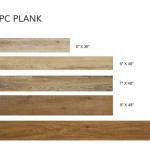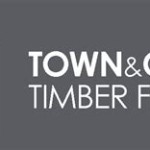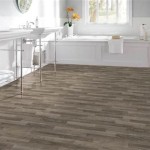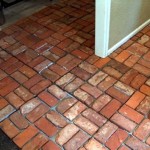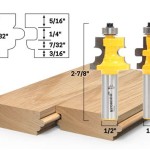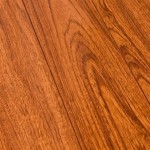Locker Room Flooring Materials List
Locker rooms are high-traffic areas that require durable and moisture-resistant flooring solutions. Choosing the right materials is crucial for maintaining a safe, hygienic, and aesthetically pleasing environment. This guide will explore the most common locker room flooring materials, their advantages, disadvantages, and considerations for specific applications.
Ceramic Tiles
Ceramic tiles are a popular choice for locker room flooring due to their durability, moisture resistance, and ease of cleaning. They are available in a wide range of colors, patterns, and sizes to suit any aesthetic.
Advantages:
- Durability: Ceramic tiles are highly resistant to scratches, dents, and impact, making them suitable for high-traffic areas.
- Moisture Resistance: Ceramic tiles are impervious to water, preventing mold and mildew growth.
- Easy Cleaning: The smooth surface of ceramic tiles allows for easy cleaning and sanitization.
- Variety of Styles: A vast selection of colors, patterns, and sizes allows for customization and aesthetic appeal.
Disadvantages:
- Coldness: Ceramic tiles are a cold material, especially in cooler climates.
- Slippery Surface: Wet ceramic tiles can become slippery, posing a safety hazard.
- Grout Maintenance: Grout lines require regular cleaning to prevent dirt and mold buildup.
Considerations:
- Use non-slip tiles or apply a sealant to enhance traction.
- Consider using a tile-heating system to mitigate the coldness issue.
- Install proper drainage to prevent water pooling.
Porcelain Tiles
Porcelain tiles are a durable and versatile option for locker room flooring. They are denser and more hard-wearing than ceramic tiles, making them ideal for high-traffic areas.
Advantages:
- Durability: Porcelain tiles are extremely strong and resistant to abrasion and impact.
- Moisture Resistance: Porcelain tiles are completely waterproof and resist mold and mildew growth.
- Easy Cleaning: The smooth surface of porcelain tiles makes cleaning and sanitization effortless.
- Variety of Styles: A wide range of colors, patterns, and sizes are available for customization.
Disadvantages:
- Cost: Porcelain tiles are generally more expensive than ceramic tiles.
- Coldness: Similar to ceramic tiles, porcelain tiles can feel cold underfoot.
- Slippery Surface: Wet porcelain tiles can become slippery without proper safety precautions.
Considerations:
- Choose non-slip tiles or apply a sealant for enhanced traction.
- Consider using a tile-heating system to improve comfort.
- Install proper drainage to prevent water accumulation.
Epoxy Flooring
Epoxy flooring is a seamless, durable, and moisture-resistant option for locker rooms. It is a resin-based coating that is applied over a concrete subfloor, creating a smooth and easy to clean surface.
Advantages:
- Durability: Epoxy flooring is highly resistant to scratches, dents, and chemicals.
- Moisture Resistance: Epoxy flooring forms a waterproof barrier, preventing moisture penetration and mold growth.
- Easy Cleaning: The seamless surface of epoxy flooring simplifies cleaning and sanitization.
- Customization: Epoxy flooring can be customized with different colors, textures, and patterns.
Disadvantages:
- Installation Time: Epoxy flooring requires a longer installation time than tile installations.
- Cost: Epoxy flooring can be more expensive than some other flooring options.
- Limited Aesthetic Options: While epoxy flooring offers some customization, it lacks the versatility of tile in terms of design and style.
Considerations:
- Choose a non-slip finish for enhanced traction.
- Ensure proper ventilation during installation and drying.
- Consult with a professional contractor for proper installation and maintenance.
Rubber Flooring
Rubber flooring is a popular choice for locker rooms, known for its durability, cushioning, and slip resistance. It is available in various colors, textures, and thicknesses.
Advantages:
- Durability: Rubber flooring is highly resistant to abrasion, impact, and chemicals.
- Cushioning: Rubber flooring provides excellent cushioning and shock absorption, reducing fatigue and impact.
- Slip Resistance: Rubber flooring naturally offers good slip resistance, enhancing safety in wet environments.
- Noise Reduction: Rubber flooring can reduce noise levels, creating a quieter and more pleasant environment.
Disadvantages:
- Cost: Rubber flooring can be more expensive than some other flooring options.
- Limited Design Options: Rubber flooring may have fewer design options compared to tile or epoxy.
- Maintenance: While easy to clean, rubber flooring requires regular maintenance to prevent dirt and grime buildup.
Considerations:
- Choose a rubber flooring with appropriate thickness and density for the traffic level and intended use.
- Consider using interlocking tiles for easier installation and replacement.
- Regular cleaning and maintenance are crucial to extend the lifespan of rubber flooring.
Vinyl Flooring
Vinyl flooring is a cost-effective and versatile option for locker rooms. It is available in various styles and colors, offering a balance of durability and aesthetics.
Advantages:
- Cost-Effective: Vinyl flooring is generally less expensive than other options like ceramic tile or rubber flooring.
- Moisture Resistance: Vinyl flooring offers good moisture resistance, protecting the subfloor from water damage.
- Variety of Styles: Vinyl flooring is available in various colors, patterns, and textures, allowing for design flexibility.
- Easy Installation: Vinyl flooring is relatively easy to install, making it a convenient option for DIY projects.
Disadvantages:
- Durability: Vinyl flooring is not as durable as other options like ceramic tile or epoxy.
- Slip Resistance: Vinyl flooring can be slippery when wet, requiring the use of non-slip surfaces or treatments.
- Limited Life Span: Vinyl flooring has a shorter lifespan than other options like ceramic tile or rubber flooring.
Considerations:
- Choose a vinyl flooring with a high-wear layer for increased durability.
- Apply a non-slip treatment to enhance safety in wet conditions.
- Proper maintenance and cleaning are essential to prolong the lifespan of vinyl flooring.

Locker Room Flooring Sherwin Williams

Locker Room Design

Locker Room Flooring Sherwin Williams

5 Highly Useful Tips For Locker Room Design Blog By Greenlam So

Locker Room Design Providing The Best For Your Worker Falcon Blog

Altro Atlas Industrial Sports Changing Room Flooring

Altro Atlas Industrial Sports Changing Room Flooring

Altro Atlas Industrial Sports Changing Room Flooring

Locker Room Design
Secondary School Flooring Wall Solutions Altro
Related Posts

